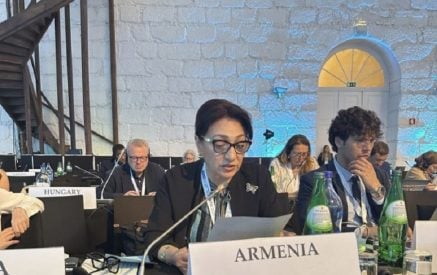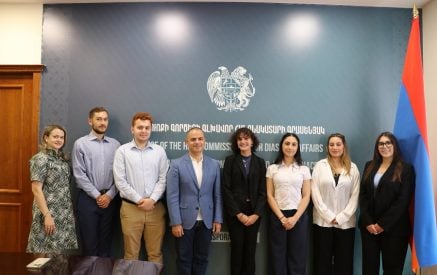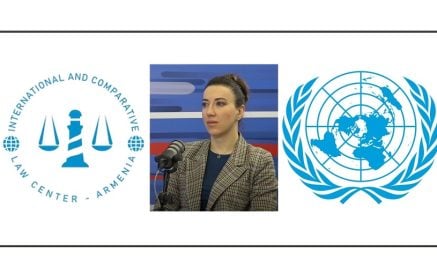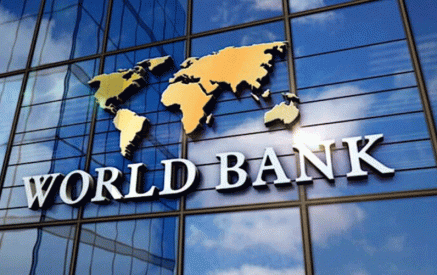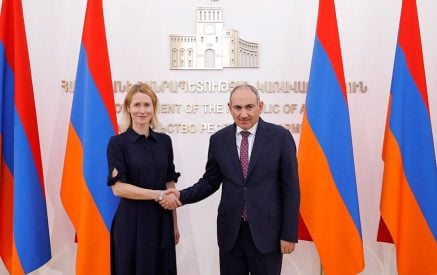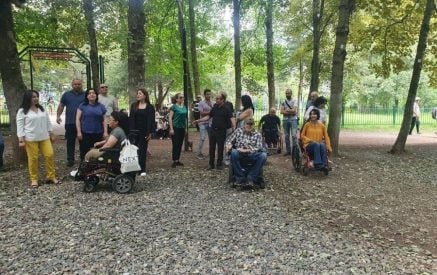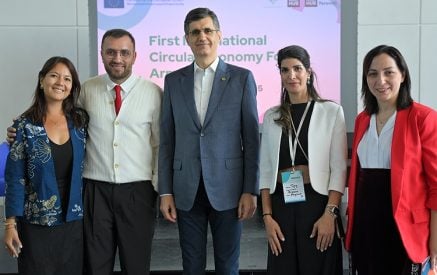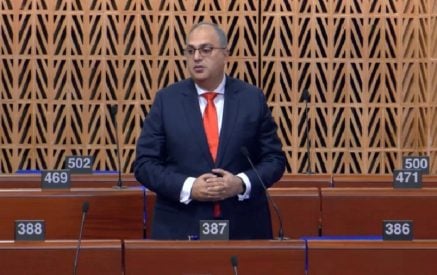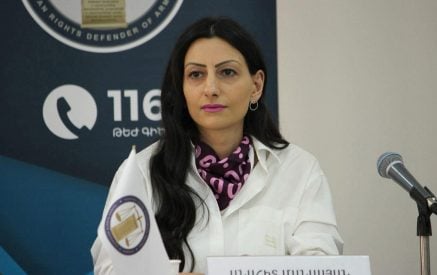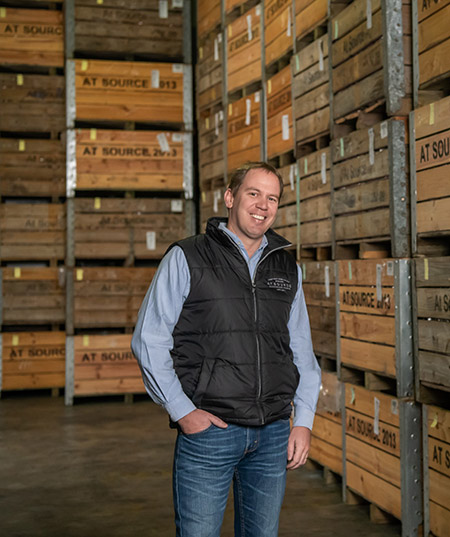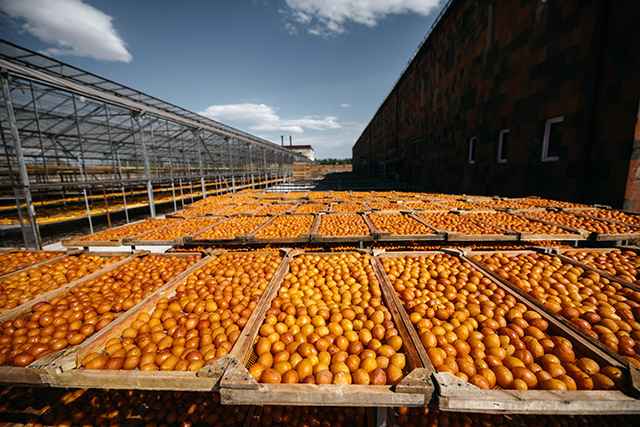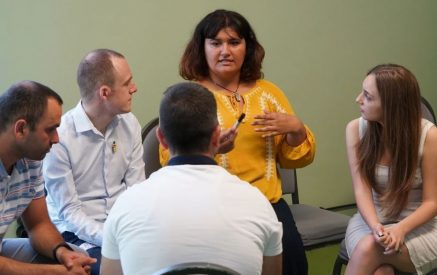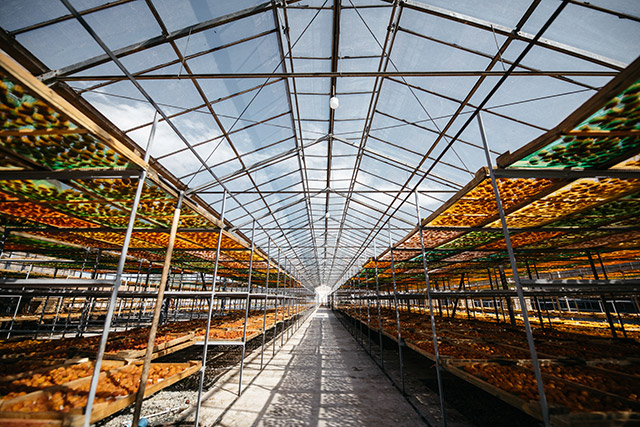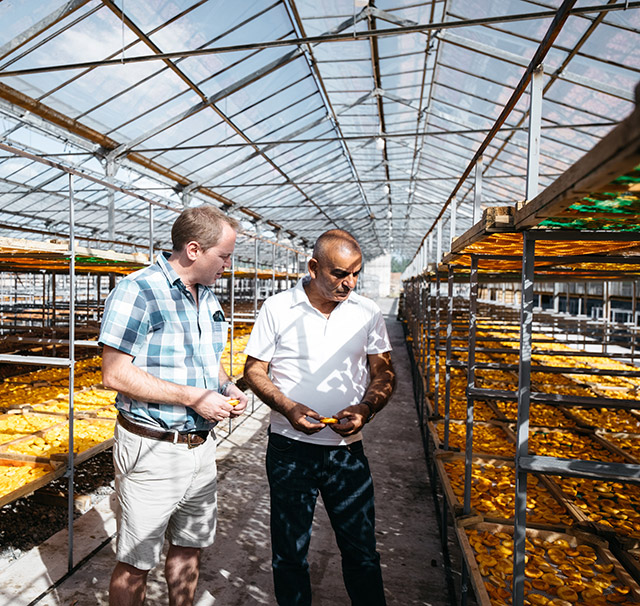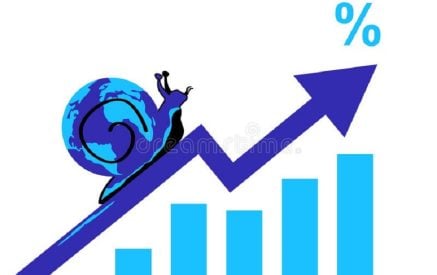Armenian dried fruit sector has reported some major advancement in improving the quality of production. Particularly, many of the companies have introduced some international practices that make their products more competitive and recognisable in the international markets. Some of the practices introduced have been inspired from a study tour to the South African Republic in early 2020. South African Republic is one of the world’s leaders in dried fruits production and exports. The study tour was organised as part of the Eastern Partnership: Ready to Trade EU4Business initiative implemented by the International Trade Centre (ITC) with the support of the European Union.
Aravot.am has talked to Anton Erwee, international dried fruit consultant from the South African Republic who has been providing consultancy to Armenia-based dried fruits producers for three consecutive years, helping them produce internationally competitive products and promote exports. In the interview Anton assesses the production and export potential of the dried fruit sector in Armenia, as well as the advancements in the sector.
Anton is currently the Chief Operating Officer at Source Handmade Foods (PTY) Ltd, which is one of the leading dried fruits production companies in South Africa. While on a study tour to South Africa local producers learned first-hand from Anton about the entire production process used there: from cultivation of fruit farms to processing, provision and sale of dried fruit.
Read also
– It was your second visit to Armenia this year during which your provided consultancy and shared your valuable expertise. Did you see any of the recommendations you made during the past years implemented? Were your expectations met?
Yes, my expectations were met and even exceeded in some ways. I expected to see that some of the recommendations that I made during my previous working visit to Armenia were implemented and I was pleasantly surprised. Some of the ideas and technologies that have been introduced since my last trip to Armenia in 2019 were even better than I expected.
– What advancement did you notice in the production process?
The general practice in Armenia is to dry the fruit to the moisture level at which it will be sold. This is the final moisture level at which the producer wants to sell the dried fruit. After the fruit is dried to the preferred moisture level it is stored. Then the fruit is packed and sold when it is still nice and soft and easy to eat. My recommendation is to dry the fruit to a much lower moisture level. With this low moisture level, the fruit is very hard and is not nice to eat but the shelf life is much longer and the color retention of the fruit is much better. When producers need to pack the dried fruit they can ensure the correct moisture level by washing it with cold water when they want to sell it. This is technically slightly a better method in my opinion. I made this recommendation when I was in Armenia in 2019 and when I was back this September, I was pleased to see that many of the producers were following this practice. So, this was another major advancement in the Armenian dried fruit sector.
Besides, much of the fruit in Armenia is dried in the sun and usually some dust contamination may occur and washing the dried fruit helps to remove the dust before packaging it and selling it.
– How would you assess the competitiveness of branding and packaging of Armenian died fruit?
There has been apparently some major investment in design and packaging, the format of packaging has improved a lot and much has been done as part of the EU4Business-Ready to Trade project. Packaging materials have improved too. Now they have better capacity to protect the product and extend its self-life. During my previous trip I saw some packaging that was not specifically designed to protect dried fruit. So, I would call this a major advancement, too. The designs of Armenian dried fruit are totally fit for the European supermarket shelves.
– Which are the preferred target markets for Armenian dried fruits?
Armenian producers have the capacity to target any European market and any other market at large. Some of the project beneficiaries are targeting the German market, some are targeting the US market. It is noteworthy here that the requirements for moisture level differ from market to market. The EU mainland markets generally require slightly higher moisture level than the UK market. The US market requires slightly drier moisture level.
Manipulating with the moisture level will enable them to target the market they aim for. There is no market in the world that Armenian dried fruit producers cannot service. Armenian dried fruit is of high quality and beautiful. It is up to the producer to decide which market they want to target and where the margins are higher.
– What is the development potential of Armenian dried fruit products other than dried fruit itself? Did you see any advancement here?
Some of the companies I visited in Armenia were making some high-quality dried fruit candies. We developed some recipes together and I saw some advancement here. For example, one of the project beneficiaries is producing some dried fruit presses with nuts that are used for cheese boards and pair with wine and cheese. Another producer was making fruit lavash which was excellent. Well, fruit lavash has been traditionally made in Armenia but it has been made of fresh fruit. What I introduced during my consultations was making it with dried fruit. These are two different products.
– How should Armenian dried fruit companies promote the “Made in Armenia” brand when marketing their products abroad?
The brand “Made in Armenia” is already very strong when it comes to dried fruits. Armenian dried fruits are already quite recognisable around the world. It is something that Armenian producers can capitalise on: it is unique and different from that in the rest of the world. The Armenian dried fruit industry needs to protect this image. This image can easily be damaged by Armenian dried fruit of poor quality that enters the international market.
The fact that Armenia has a large Diaspora community across the world also contributes to the positive image of Armenian dried fruit.
– How has dried fruit consumption and exports changed during the COVID crisis? How should Armenian companies navigate through the COVID crisis?
Dried fruit consumption in the world has increased since the pandemic hit the world. As a general comment I would expect dried fruit exports to be increasing and not to be decreasing. Finding a buyer in the target market, making an arrangement and building a relationship with them is essential for market positioning. You can’t sell a product if you are not present in that particular market. Make sure people know who you are, where you are from, what your product looks like and people will buy it.
A. KARAPETYAN




